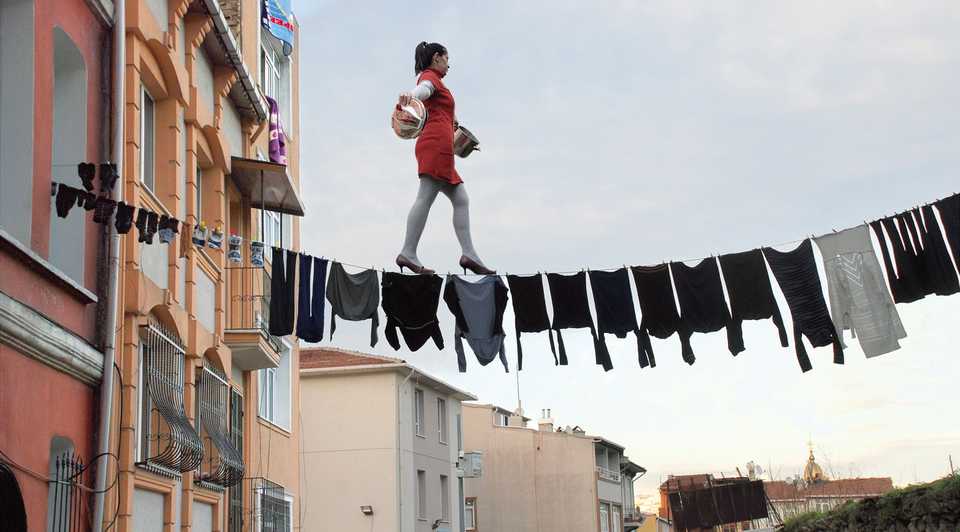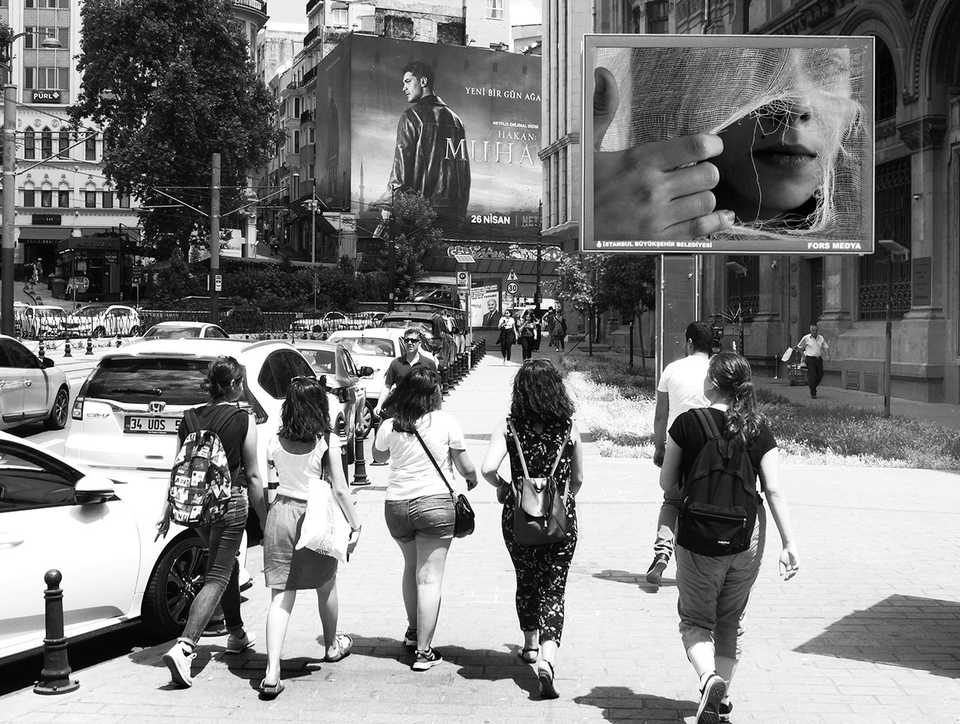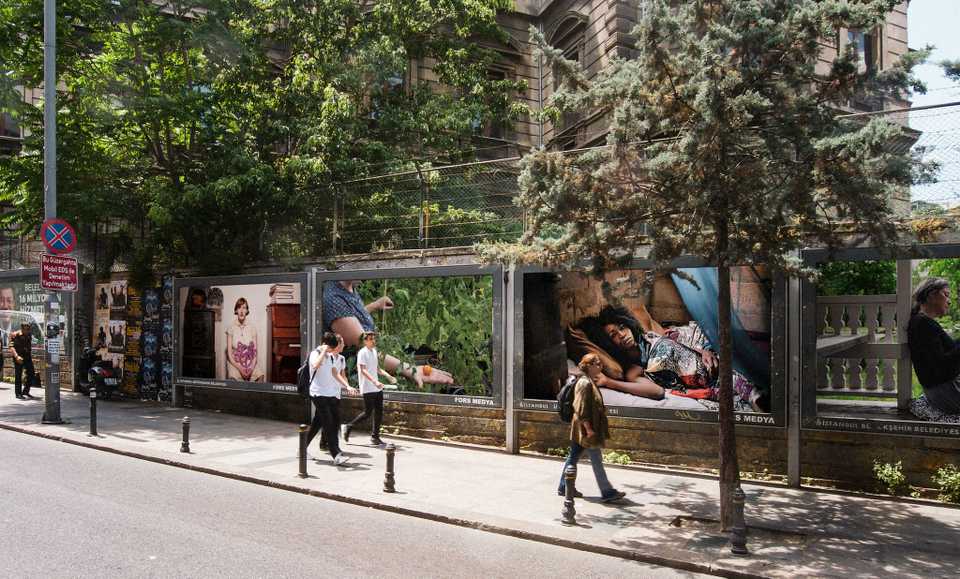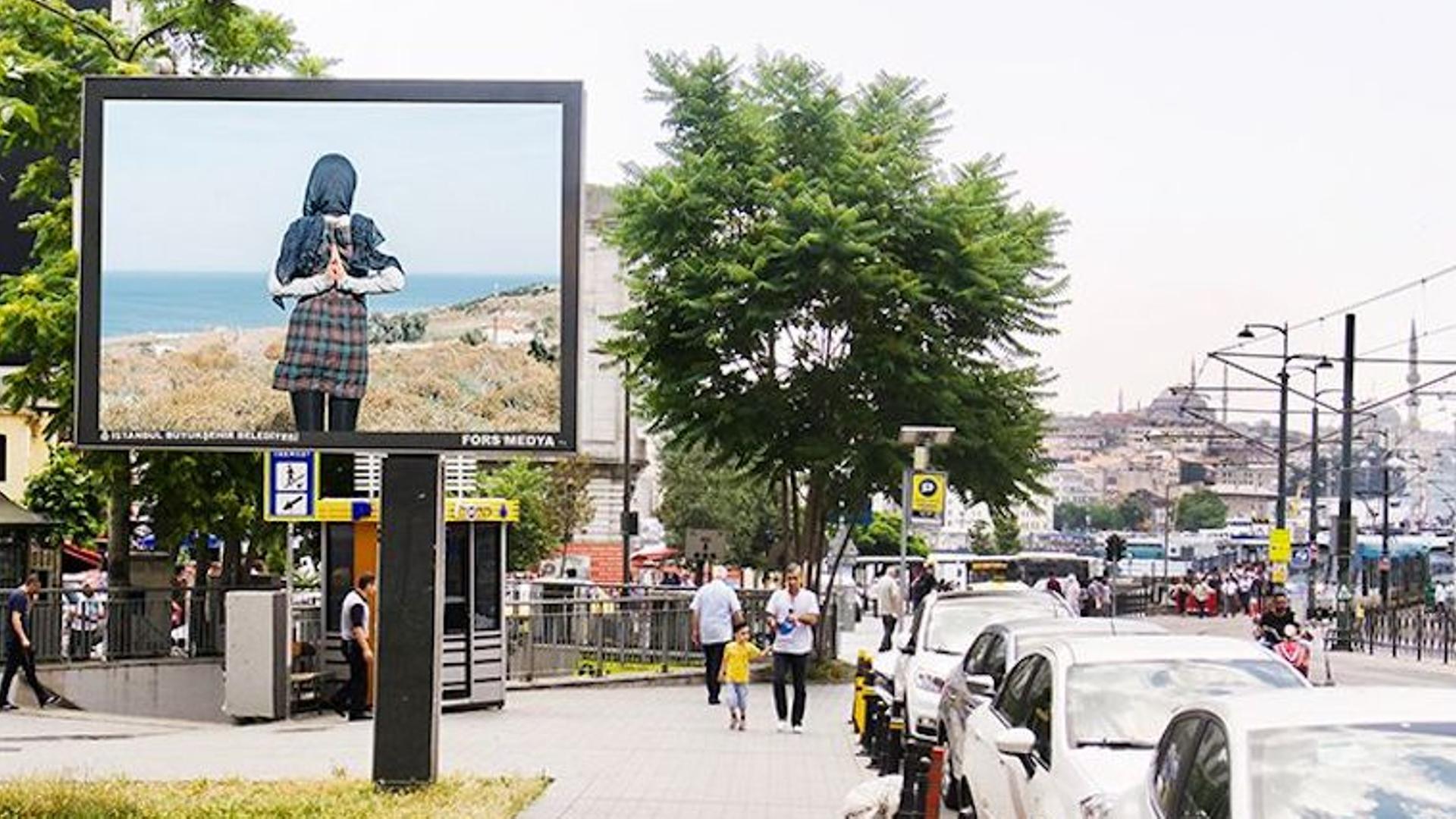“I have been working between Denmark and Turkey for three years,” Fusun Eriksen says, “focusing on cultural and artistic exchange projects at the Danish Cultural Institute.” She is a Danish citizen but she was born and raised in Turkey.
In her role for the institute, Eriksen has been the Country Manager for Turkey for the past year, travelling back and forth between both nations. “It’s kind of like the British Council, but on a much smaller scale,” she laughs.
The Danish Cultural Institute is one of the collaborators – alongside Kentvizyon, a billboard company – of Billboard Istanbul 2020, a citywide arts project featuring photographs shot by female artists from Turkey, Morocco and Nordic countries.
The two-week long exhibition is underway, and will run until October 18, 2020. It brings together 115 contemporary female artists and selected students from the Royal Danish Academy of Fine Arts in Copenhagen and Mimar Sinan University of Fine Arts in Istanbul (MSGSU).

The brainchild of Danish visual artist Hanne Lise Thomsen, the project will see the city filled with “photographic images by the female artist – raising awareness and encouraging public debates on gender issues, as well as bringing contemporary art to a wider audience of all genders and ages.”
Thomsen is aided by collaborators: curator Lise Grüner Bertelsen and graphic designer Jeanne Betak.
Eriksen says Thomsen has dedicated her life to public art, and that she does not believe in art being imprisoned in institutions such as museums and galleries but that it should be out in the open, interacting with people.
“She is very passionate,” Eriksen says of Thomsen, “yet very peaceful. She gives artists a lot of freedom to operate in. A peaceful dialogue, you might say.”
“Her art and projects focus primarily on dialogue with the surrounding society: the metropolis provides the platform for many of her projects,” press materials say. “The complexity of cities, with their constantly changing atmosphere and multifaceted architectural spaces, is a key starting point and source of inspiration, and guides the overall choreography of each individual project.”
This is not the first time Thomsen has taken on work on such a large scale: she curated and realised Billboard Casablanca in 2015, as well as the billboard project ‘We Are From Here in Ramallah’ in 2012, and also the citywide billboard project, ‘Women 2003’ in Copenhagen and Malmo.
“As you know, female artists around the world do not get what they deserve, the recognition they deserve,” Eriksen says when asked why Billboard Istanbul 2020 only features female artists. She suggests that Thomsen wants to redress the hierarchy a bit: “Hanne Lise wants to show the female perspective to the world.”

The billboards are spread throughout many neighbourhoods of Istanbul, and while they do not carry artist information on them, they each have a QR code that’s scannable by smartphone.
We learn from Eriksen that other cities have shown interest in billboard projects of their own. “We have an institute in St. Petersburg in Russia, and we will probably have the billboard project there next year.”
“Each city poses challenges of its own,” Eriksen says. “For example, one may have different sizes of billboards than the cities before, which means not all photos from before are suitable for the new city.” Istanbul was great in that respect, she says, with billboards spread throughout the city and many sizes from which to choose.
“There is also interest from Egypt, and Moscow is keen too. It seems as though after Billboard Istanbul 2020, Hanne Lise’s work will be easier in setting up her project in other cities,” Eriksen concludes.
Thumbnail artist: Hilde Honerud; headline artist: Eija-Liisa Ahtila. Photos courtesy of Billboard Istanbul 2020.











Discussion about this post